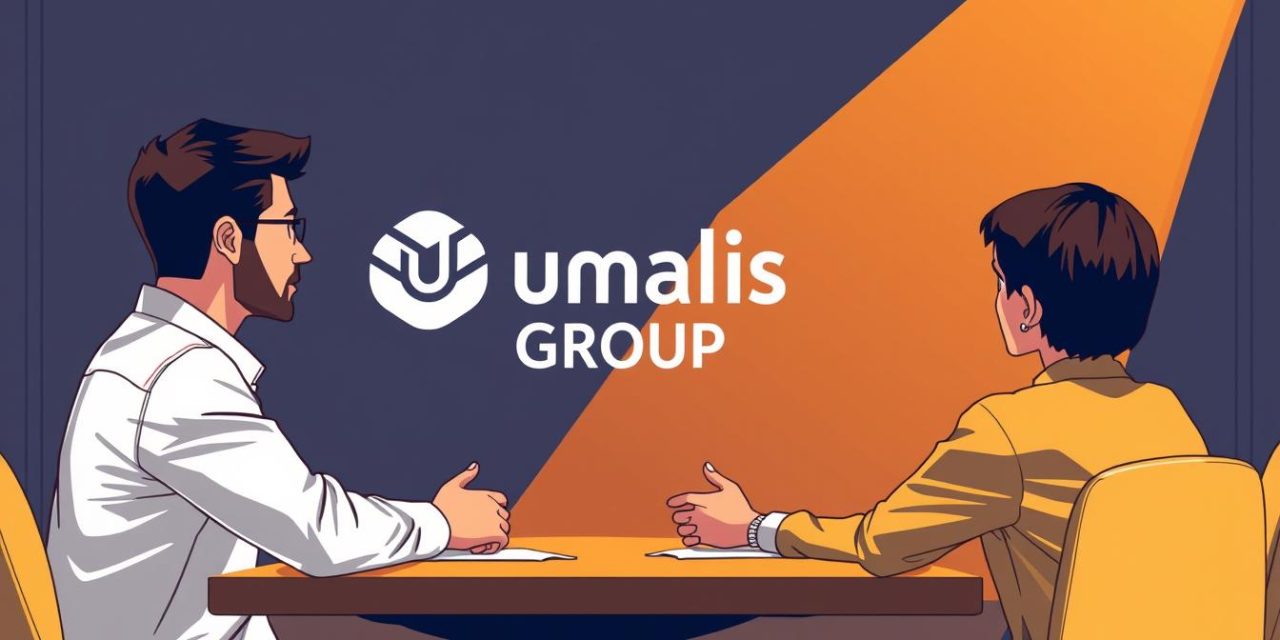Did you know 68% of self-employed professionals in France feel underpaid for their expertise? In today’s gig economy, standing firm on your worth isn’t optional—it’s the difference between thriving and barely surviving. For independent workers, confidently discussing terms shapes not just paychecks but entire career trajectories.
Many professionals hesitate to advocate for themselves, fearing lost opportunities. Yet those who master these discussions consistently secure better projects, build stronger partnerships, and enjoy greater work-life balance. This isn’t about haggling—it’s crafting agreements where everyone wins.
We’ll explore how transforming your approach to client conversations can elevate your independence. From setting clear boundaries to articulating your unique value, you’ll gain tools to turn every discussion into a stepping stone for growth.
Table of Contents
Key Takeaways
- Confident discussions directly impact earning potential and career longevity
- Clear agreements prevent scope creep while maintaining professional relationships
- Strategic positioning helps attract clients who value quality over low costs
- Flexible frameworks adapt to different project types and client personalities
- Ongoing skill development builds credibility in competitive markets
Understanding the Role of Negotiation in Freelance Careers
Freelancers in France report 42% higher satisfaction rates when setting clear project terms upfront. This foundational practice transforms short-term gigs into sustainable partnerships while maintaining financial stability. Thoughtful agreements don’t just define deliverables—they build trust and position you as a strategic partner rather than a temporary resource.
Benefits of Effective Discussions
Clear terms protect both parties’ interests while creating space for creative collaboration. For example, structured payment schedules prevent cash flow gaps, and intellectual property clauses ensure your innovative solutions remain yours. Clients remember professionals who balance firmness with flexibility—this balance becomes your reputation.
Aligning Expertise with Market Value
Regularly comparing your rates with industry benchmarks keeps your offerings competitive. Tools like salary surveys or platforms like Malt reveal what clients pay for similar IT services in Paris or Lyon. Adapting to emerging technologies—cloud security or AI integration—positions you as a specialist worth premium compensation.
One web developer increased her rates by 30% after demonstrating how her automation scripts saved clients 15 hours monthly. This approach turns abstract “experience” into measurable value that clients willingly pay for.
Key Components of a Successful Contract Negotiation

Crafting solid agreements transforms client interactions from uncertain exchanges into structured partnerships. In France’s competitive freelance market, 47% of disputes stem from undefined deliverables. Clear contracts act as both shields and bridges—protecting your work while fostering trust.
Establishing Fair Terms and Payment Structures
Begin by mapping project phases to financial milestones. A graphic designer might tie 30% payment to concept approval, 50% upon draft completion, and 20% after final edits. This approach aligns cash flow with effort while giving clients predictable checkpoints.
Include deadlines for feedback and approvals to prevent bottlenecks. Specify revision limits—three rounds keeps projects profitable. Late fees (2% monthly) encourage timely payments without straining relationships.
Safeguarding Your Professional Interests
Intellectual property clauses determine who owns created assets. For coding projects, you might retain rights to reusable frameworks while transferring final product ownership. Confidentiality agreements protect sensitive client data—critical for industries like finance or healthcare.
Termination conditions outline exit strategies. A 14-day notice period allows smooth transitions if collaborations stall. One Paris-based copywriter avoided €5,000 in unpaid work by enforcing this clause when a client missed two consecutive payments.
Negotiation Skills for Freelancers

French IT professionals often undervalue their contributions—35% charge below market rates despite advanced certifications. Your ability to command fair compensation begins with recognizing what makes your work indispensable. This isn’t about arrogance, but understanding how your solutions translate to client success.
Revealing Your Competitive Edge
Start by auditing your technical capabilities and project outcomes. A cybersecurity specialist might calculate how their threat detection systems reduced client downtime by 40%. Quantify results using metrics clients care about: cost savings, efficiency gains, or risk reduction.
« Your rate should reflect the problems you solve, not just hours worked, » notes a Paris-based cloud architect who doubled her fees after demonstrating €12,000+ annual savings per client. Translate certifications like AWS Solutions Architect into tangible benefits—faster deployment times or compliance assurance.
Build your narrative around specific industry challenges. For fintech clients, highlight PCI-DSS compliance experience. In e-commerce, emphasize load optimization skills that prevented crash losses during peak sales. Client testimonials become proof points—feature them prominently in proposals.
Update your value proposition quarterly. Track emerging technologies like AI integration or blockchain security. One developer increased inquiries by 60% after adding AI chatbot customization to his service menu. Your evolving expertise justifies premium positioning in France’s competitive tech landscape.
Preparing for Negotiation: Research and Pricing Strategies
Setting competitive rates begins with understanding your ecosystem. Professionals who invest 3-5 hours weekly in market analysis earn 22% more than those relying on guesswork. This process transforms vague assumptions into actionable insights that align your offerings with client expectations.
Building Your Data-Driven Foundation
Start by cross-referencing salary surveys with live job postings. For IT specialists in France, platforms like Malt and HelloWork reveal real-time demand for cloud security or AI integration roles. Compare these figures with industry reports from Syntec Numérique to spot pricing gaps.
| Research Method | Key Focus | Tools/Platforms |
|---|---|---|
| Salary Benchmarks | Regional rate comparisons | Glassdoor, PayScale |
| Project Listings | Client budget ranges | Malt, Comet |
| Peer Networking | Unofficial rate insights | Meetups, LinkedIn Groups |
Track competitors’ service bundles through their portfolios. A web developer in Lyon discovered clients paid 15% more for GDPR-compliant hosting—a feature she later emphasized in her packages. Adjust your pricing quarterly using inflation indexes and skill certifications as guides.
“Your rate card should breathe like your business,” advises a Paris-based SaaS consultant who revises prices every six months. Create tiered options: base rates for standard projects, premium fees for urgent timelines, and custom quotes for complex scopes.
Communication Techniques for Effective Negotiations
Mastering client discussions requires more than polished pitches—it demands strategic dialogue architecture. Professionals who refine their exchange methods see 35% faster project approvals and 28% fewer revisions. This approach transforms standard conversations into alignment engines.
Active Listening and Clarity in Messaging
Start by decoding unspoken priorities. When a Paris-based cloud consultant paused to ask « What outcome would make this project unforgettable? » clients revealed budget flexibility they’d never mentioned. Strategic silence often speaks louder than proposals.
Frame responses using the client’s terminology. If they emphasize « scalability, » mirror that word when explaining your solution. Technical experts who simplify jargon without dumbing down content achieve 40% higher comprehension rates.
« Silence is one of the great arts of conversation. »
Framing Your Offer to Create Win-Win Scenarios
Present options rather than ultimatums. A Lyon IT specialist increased acceptance rates by 60% using tiered service packages. Instead of fixed pricing, she offered:
- Basic security audits with quarterly reports
- Premium plans including emergency response
- Enterprise-level AI threat monitoring
Address concerns through solution-focused language. When clients worry about costs, showcase how your automation tools reduce their long-term expenses. This reframing technique turns obstacles into collaboration opportunities.
Time your pauses after key points. Allowing 3-5 seconds of reflection space lets clients mentally align with your proposals. Professionals using this method report 22% fewer counterarguments during contract discussions.
Tactical Approaches: Anchoring, Bundling, and Compromise
Strategic positioning in client discussions determines whether you’re seen as a bargain vendor or premium partner. Three proven methods help shape favorable outcomes while preserving relationships: anchoring your value, packaging services smartly, and finding balanced concessions.
The Art of Anchoring Your Offer
Your opening number sets the tone. Start 15-20% above your target rate when discussing projects. This creates space for adjustments while maintaining your worth. For example, a developer might propose €85/hour while prepared to settle at €70.
Justify anchors with tangible proof:
- Show certifications like Google Cloud Architect
- Reference past projects that delivered 30% cost savings
- Highlight niche skills like multilingual GDPR compliance
Leveraging Bundling to Showcase Added Value
Combine complementary services into irresistible packages. A content creator could offer SEO audits with monthly blog posts at 12% less than à la carte pricing. Clients perceive bundled deals as comprehensive solutions rather than piecemeal tasks.
| Approach | Purpose | Implementation |
|---|---|---|
| Anchoring | Establish value perception | Start high, justify with ROI data |
| Bundling | Increase project scope | Package design + hosting + maintenance |
| Compromise | Maintain relationships | Adjust timelines for faster payments |
When flexibility becomes necessary, protect your bottom line. Offer extended deadlines in exchange for 50% upfront payments. Explore salary portage structures for clients preferring phased billing. This balances their cash flow needs with your financial security.
Strategic Tips for Setting
Building a thriving independent career resembles tending a vineyard—consistent care creates lasting value. Three pillars support sustainable success: clear boundaries, adaptable frameworks, and market-aligned positioning. Your terms become the trellis guiding growth while protecting against unpredictable storms.
Start by anchoring every agreement to measurable outcomes. Tie payment milestones to completed phases, like releasing source code after final testing. This approach balances cash flow security with client confidence. Use sunset clauses for intellectual property rights—retain reusable components while transferring project-specific assets.
Regularly reassess your positioning using localized data. Compare Lyon’s web development rates with Parisian fintech demands through platforms like Malt. Adjust service bundles quarterly, emphasizing emerging needs like AI integration or eco-friendly hosting solutions.
Your career grows when partnerships align with your evolving expertise. Clients remember professionals who blend firm boundaries with creative flexibility—this equilibrium transforms transactional deals into collaborative journeys. Define terms that honor your worth while leaving room for mutual growth.
FAQ
How do I determine my ideal rate as a freelancer?
Start by researching industry benchmarks using platforms like Glassdoor or Payscale. Factor in your expertise, project complexity, and regional standards. Test different pricing tiers with smaller clients to find a balance between competitiveness and fair compensation.
What’s the best way to handle scope creep during a project?
Address changes immediately by revisiting the original contract terms. Propose adjustments to timelines or budgets for new requests, and document everything in writing. Setting clear boundaries early prevents misunderstandings.
How can I anchor my offer effectively in discussions?
Begin with a slightly higher rate or broader terms than your target. This establishes a reference point, making subsequent compromises feel more favorable to the client while protecting your baseline needs.
What strategies create win-win scenarios with clients?
Focus on active listening to identify their priorities. Bundle services that align with their goals—like adding SEO optimization to web development—while emphasizing long-term benefits for both parties.
How should I respond if a client insists on a lower budget?
Offer flexible solutions, such as phased deliverables or reduced scope. Highlight the value of your work through case studies or ROI examples. If terms remain unfavorable, politely decline to protect your standards.
Why is market research critical before setting rates?
Understanding competitor pricing and client expectations helps you position yourself strategically. It also builds confidence in justifying your fees during discussions, reducing pushback.
What should I prioritize during pre-negotiation preparation?
Research the client’s industry pain points, budget range, and past collaborations. Define your non-negotiables (e.g., payment deadlines) and prepare data-backed arguments to support your terms.
How do I ensure timely payments without straining relationships?
Include clear payment milestones in contracts and use platforms like PayPal or Upwork for automated reminders. For larger projects, request a deposit upfront to secure commitment.
When should I walk away from a negotiation?
If the client disregards your expertise, demands unrealistic deadlines, or refuses fair compensation, prioritize your boundaries. Respectfully decline and redirect energy to aligned opportunities.
Can bundling services improve my earning potential?
Yes. Package complementary offerings—like copywriting with social media management—to increase perceived value. Clients often prefer comprehensive solutions over à la carte options.





